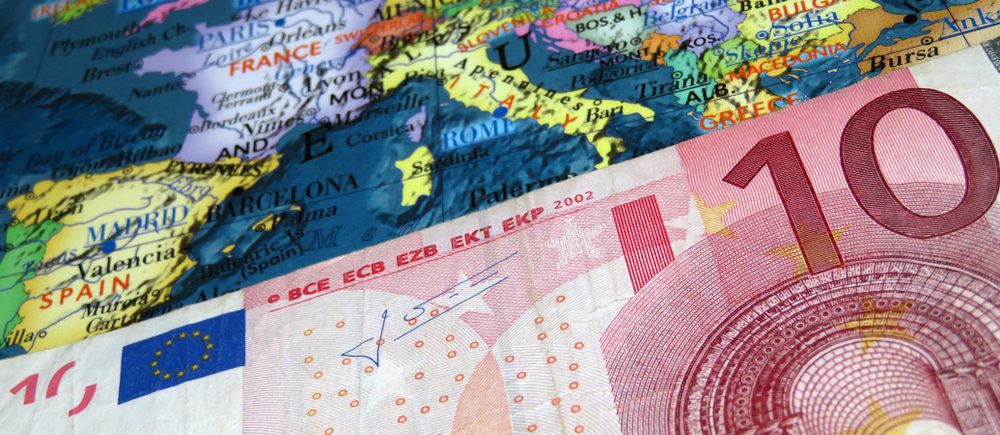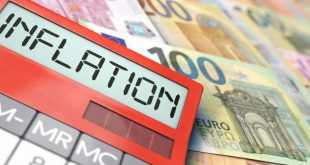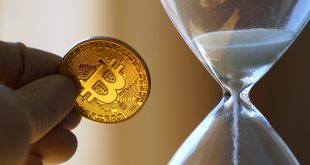It is evident that ECB president Christine Lagarde has a euro problem though weaker euro is the last thing that Lagarde needs at a time when the ECB is trying to tame hot inflation within the Eurozone. As inflation nears 7.5 percent, the fastest rate since 1999, the exhausted euro adds to inflationary pressure by raising import costs in general and the cost of commodity imports in particular since this is an activity that is dominated by the USD.
Anyone who is still doubting Lagarde’s euro problem is also ignoring the serious damage that the Covid-19 pandemic has wrought on Europe’s public finances in general and on Italy’s economy in particular. Deterioration makes it difficult for the ECB to defend the euro by hiking interest rates or by means of tapering bond buying for fear of triggering another round of the Eurozone sovereign-debt crisis.
Since the beginning of 2022, the euro has lost around 8 percent in value against the dollar and is showing no sign of stabilizing. Consequently, it is now trading at lower levels than those plumbed during the depth of the 2010 Eurozone sovereign-debt crisis.
The principal factor driving the euro lower has been the deviation in monetary-policy stances between the US Fed and the ECB. Fed appears to be at the start of a meaningful interest-rate-hiking cycle to regain control over inflation, meanwhile, the ECB keeps insisting that there is no need for higher ECB interest rates despite record inflation. As in the past, higher US interest rates than those in Europe have increased the dollar’s appeal.
Similarly, whereas Fed is planning to reduce dollar liquidity by $95 billion per month through tapering, the ECB keeps adding to euro liquidity by continuing with its bond-buying program. The US dollar has received limitless support to maintain its status as a safe-haven currency at a time of heightened global economic uncertainty.
The general way to defend a weakening currency is for the central bank to raise interest rates and to stop printing money through bond purchases. However, as illustrated by Italy’s very compromised public finances, that avenue would seem to be severely constrained for the ECB for fear of inviting another round of the Eurozone sovereign-debt crisis.
In the wake of the pandemic, Italy’s budget deficit ballooned to around 10 percent of GDP while its public-debt-to-GDP ratio skyrocketed to 155 percent or to the highest level in the country’s 150-year history. The only things that have kept Italy afloat over the past two years have been the ECB’s negative-interest-rate policy and its massive bond-buying program. It certainly has helped Italy that the ECB’s bond buying involved the purchase of the entirety of the Italian government’s net debt issuance and that ultra-low interest rates kept Italy’s debt-service costs in check.
Lagarde now seems to be faced with a difficult policy dilemma. She can leave interest rates unchanged and continue bond buying to support the Eurozone’s troubled economic margin, but at the cost of inviting further euro weakness. Alternatively, she can start raising interest rates and end the ECB’s bond buying program to support the currency, but at the cost of inviting another round of the Eurozone sovereign debt crisis.
One way out of Lagarde’s dilemma would be an early end to Fed interest-rate-hiking cycle as well as to the geopolitical troubles that are increasing the dollar’s safe-haven appeal. However, with US inflation so high and with no end in sight of Russia’s Ukrainian war, I would not bet the farm on that happening anytime soon.
We have a conflict in pressures in monetary policy,” Olli Rehn, governor of the Bank of Finland and member of the Governing Council of the ECB, told CNBC’s Silvia Amaro on Friday. “We are almost in between a rock and a hard place so that on one hand we have to ensure that the recovery will continue. On the other hand, we have to prevent higher inflation expectations being entrenched and being reflected in the labor market,” Rehn said.
Like many central banks around the world, the ECB is seeking to steer the Eurozone economy through an inflation surge that has been exacerbated by Russia’s unprovoked onslaught in Ukraine. The ECB should move quickly to raise interest rates in order to tackle soaring inflation, according to Finland’s central bank governor. His comments come as the US Federal Reserve and the Bank of England’s tightening cycle intensifies pressure on the ECB to follow suit.
The US central bank on Wednesday raised its benchmark interest rate to a target rate range of between 0.75% and 1%. It marked Fed’s biggest rate hike in two decades and its most aggressive step yet in its fight against a 40-year high in inflation. Shortly thereafter, the Bank of England raised interest rates to their highest level in 13 years. The Bank also warned about the prospect of a recession and said UK inflation could soon hit 10%.
Inflation in the Eurozone climbed to 7.5% in April, almost four times the ECB’s target level, prompting questions over how the ECB will react. The central bank’s next meeting is on June 9, with another meeting slated for July 21.
Last month, ECB Vice President Luis de Guindos tried to reassure lawmakers over rising prices, saying the Eurozone is close to reaching peak inflation. The central bank sees price pressures cooling in the second half of the year, although energy costs are expected to keep inflation relatively high.
The ECB last raised interest rates in 2011 and it has kept its benchmark deposit facility rate, currently at -0.5%, in negative territory for nearly a decade.
When asked whether he believed it will be possible for hawkish ECB members to convince more dovish colleagues to approve a rate rise in July, Rehn replied: “We have always very constructive and intensive discussions based on the incoming data and then we analyze what is the best course of action.”
Momentum is building for the ECB to raise interest rates in July to fight soaring inflation, after dovish policymakers indicated they are ready to accept an end to almost eight years of negative borrowing costs. ECB chief economist Philip Lane and executive board member Fabio Panetta have signaled they are now more open to raising rates in the coming months, following calls from the governing council’s hawks to make the first rise in more than a decade sooner rather than later.
The hawkish shift comes after Eurozone inflation hit a record 7.5 per cent in April and brings the ECB closer in line with Federal Reserve and the Bank of England, which both raised rates this week. However, the Eurozone’s monetary policymakers still lag far behind their peers in the US and UK in the cycle of raising interest rates.
The ECB has set borrowing costs below zero since June 2014, when it was still fighting Europe’s debt crisis. The deposit rate is now minus 0.5 per cent. On Friday the additional borrowing costs investors demand to hold Italian debt over that of Germany climbed above 2 percentage points for the first time since 2020, underscoring concerns that any ECB tightening of monetary policy will mainly effect riskier Eurozone countries.

 Noor Trends News, Technical Analysis, Educational Tools and Recommendations
Noor Trends News, Technical Analysis, Educational Tools and Recommendations




